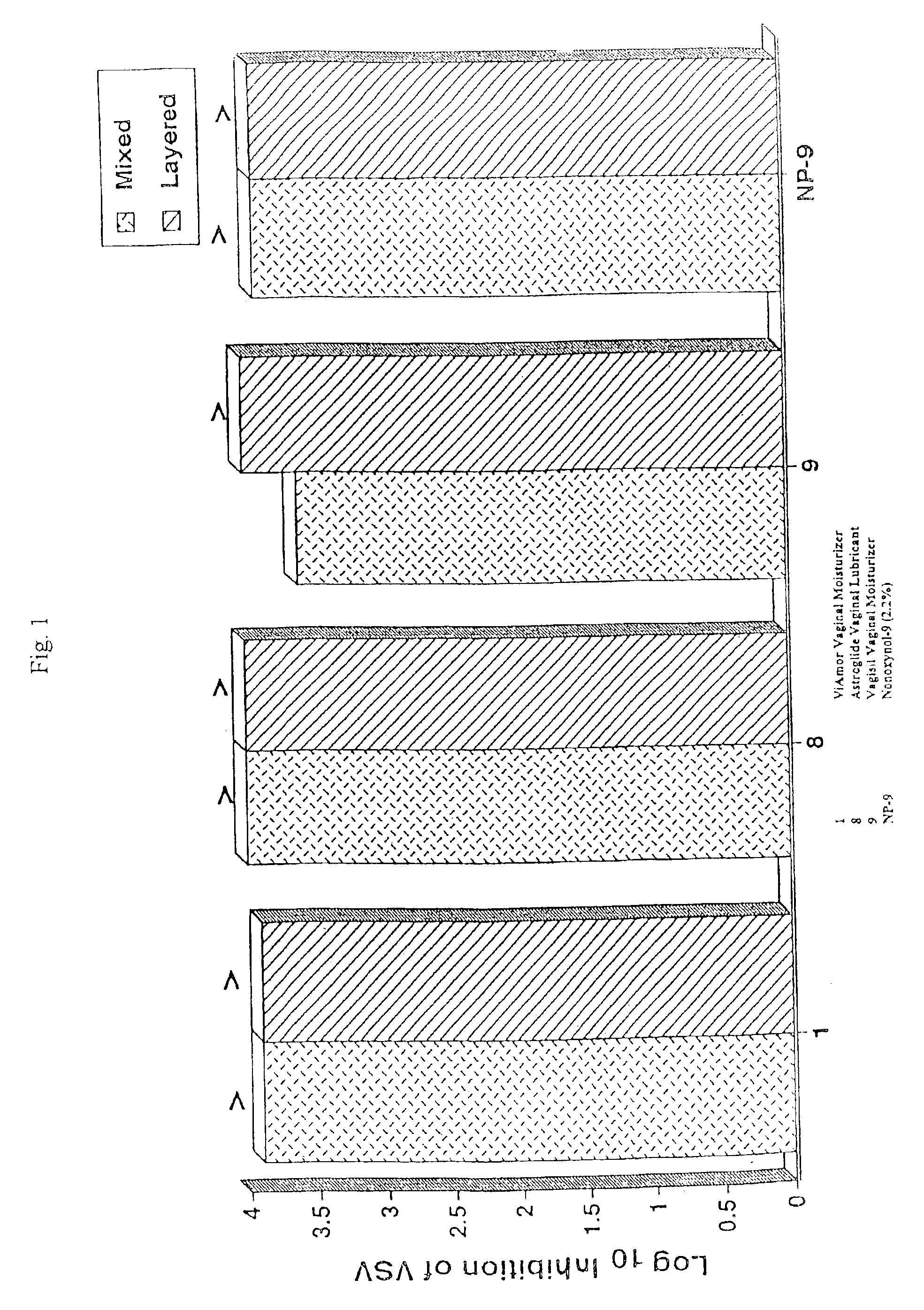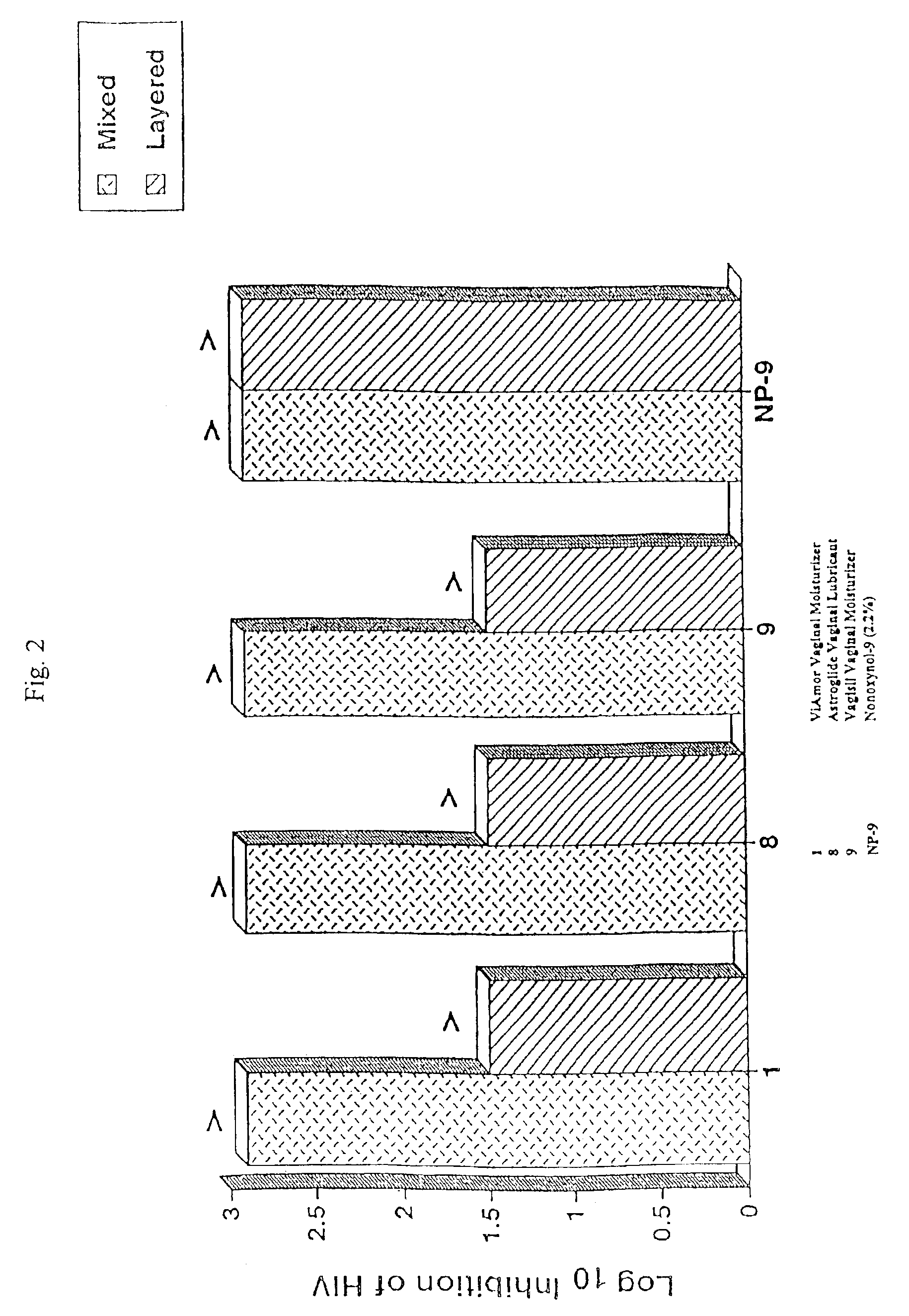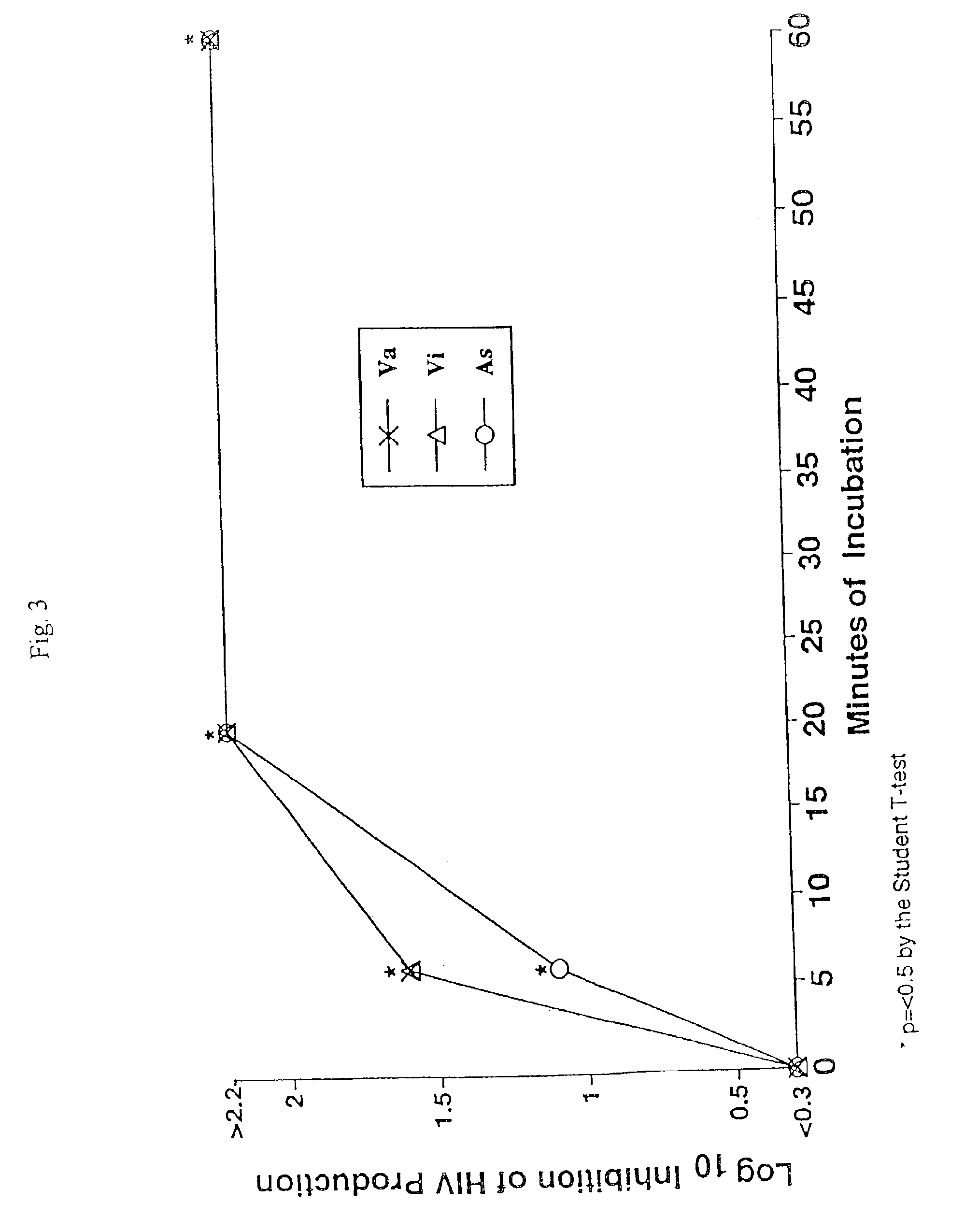Inhibitory chemical formulation with preservative system
- Summary
- Abstract
- Description
- Claims
- Application Information
AI Technical Summary
Benefits of technology
Problems solved by technology
Method used
Image
Examples
example i
Preparation of Reagents
A. Specimens
[0039]Seminal fluids are collected from normal males. Samples are stored at 4° C. for 1 to 2 days or alternatively stored at −20° C. for up to three months before use. University of Texas Institutional Review Board Approval Guidelines, including informed consent were followed for all samples collected.
B. Viruses
[0040]Stocks of 213, AC0-1 and 9H strains of HIV were propagated in human H9 lymphocytes using the standard procedure described in Baron et al., Arch. Intern. Med. 159(3):303-310 (1999) and Williams et al., Virology 184(2):723-728 (1991), each of which is incorporated herein by reference. Aliquots were stored frozen at −70° C. The Indiana strain of vesicular stomatitis virus (VSV) was propagated in murine L cells using the method in Coppenhaver et al., New Eng. J. Med. 330(18):1314-1315 (1994), which is incorporated herein by reference. VSV stocks were stored frozen at −70° C.
C. Cells
[0041]Human peripheral blood mononuclear leukocytes (PBL o...
example ii
Virus Multiplication
[0042]The effect of various treatments on virus multiplication was determined in virus-infected human CEM lymphocytes, THP-1 macrophages peripheral blood mononuclear leukocytes, or L929 cells. The multiplication of HIV in PBLs was determined as the yield of infectious HIV from 2×106 Ficoll-Hypaque purified normal peripheral blood mononuclear cells that had been cultured with phytopemagglutinin (4 ug / ml) for 2 days before treatment with 20 u / ml of interleukin 2 (40 units / ml) for an additional 2 days and then infected with 105, 50% tissue culture infectious doses of HIV, strain 213. The infected cells were then incubated with 20 u / ml interleukin 2 for five days, washed four times, and then incubated with or without samples, the various mixtures of samples, or culture medium for 15 o 60 minutes. These leukocytes were subsequently washed and cultured for HIV production in RPMI 1640 tissue culture medium, plus 15% fetal bovine serum and 20 u / ml of interleukin 2 for 24...
example iii
Assays of HIV and VSV Production
[0043]The production of HIV in the experiments was determined by the standard tissue culture infectious dose 50% assay using MT-2 human lymphocytes, as described in McKeating et al., supra. Specifically, the culture fluids harvested from the HIV-infected human cells were serially diluted in 0.5 log10 increments using RPMI culture medium containing 10% fetal bovine serum. 50 ul of each dilution was added to quadruplicate microtiter wells, each containing 110 ul of 2×104 MT-2 cells in culture medium. After the serial dilutions, 120 ul of nutrient medium was added to each well. These microtiter plates were then incubated at 37° C. for three days in a CO2 incubator, and then re-fed culture medium containing 10% fetal bovine serum. The wells were read for HIV multinucleated giant cell cytopathic effect on day 5 or 6. The 50% tissue culture infections dose was determined using the Reed-Muench method, as described in Reed et al., Am. J. Hyg. 27:493-497 (1938...
PUM
| Property | Measurement | Unit |
|---|---|---|
| Fraction | aaaaa | aaaaa |
| Fraction | aaaaa | aaaaa |
| Fraction | aaaaa | aaaaa |
Abstract
Description
Claims
Application Information
 Login to View More
Login to View More - R&D
- Intellectual Property
- Life Sciences
- Materials
- Tech Scout
- Unparalleled Data Quality
- Higher Quality Content
- 60% Fewer Hallucinations
Browse by: Latest US Patents, China's latest patents, Technical Efficacy Thesaurus, Application Domain, Technology Topic, Popular Technical Reports.
© 2025 PatSnap. All rights reserved.Legal|Privacy policy|Modern Slavery Act Transparency Statement|Sitemap|About US| Contact US: help@patsnap.com



